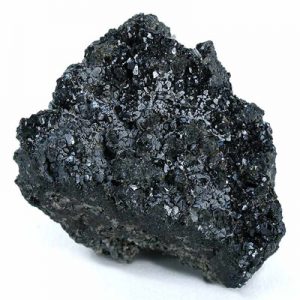Cassiterite
Cassiterite is the principal ore of Tin. It has been an important ore of tin for centuries and is still the greatest source of tin today. It has almost twice the dispersive fire of diamond! Lighter coloured clean gems are very rare and very impressive. It also has an extremely high refractive index, which results in exceptional fire and dispersion. Cassiterite crystals are usually very dark and opaque so gem quality crystals are very rare. The name Cassiterite is derived from the Greek “kassiteros”, meaning tin. Cassiterite is not known to be treated or enhanced in any way.
Current sources of gem quality crystal are Cornwall, England; Otjimbojo, Namibia; Xue Bao Diang Mountains, Sichuan Province, China; Fazenda do Funil, Ferros, Minas Gerais, Brazil; several locations in Bolivia. Bolivia is thought to have the best gem quality deposits and it is one of the few sources for ‘wood tin’. In the late 1990s, both Russia and China produced very largely, high-quality transparent crystals.

| Category: | Oxide minerals |
| Chemical Formula: | SnO2 |
| Tin Oxide | |
| Molecular Weight: | 150.71 gm |
| Composition: | Tin | 78.77 % | Sn | 100.00 % | SnO2 |
| Oxygen | 21.23 % | O | |||
| 100.00 % | 100.00 % | = TOTAL OXIDE |
| Crystallography: | Tetragonal – Ditetragonal Dipyramidal |
| Crystal Habit: | Crystals short to long prismatic {001}, with {110} and {100} well developed, terminated by steep pyramidal forms, to 10 cm; less commonly pyramidal. In radially fibrous botryoidal crusts and concretionary masses; coarse to finely granular, massive. |
| Twinning: | Very common on {011}, as contact and penetration twins, geniculate; lamellar. |
| Cleavage: | Perfect on {100}, Indistinct on {110}; partings on {111} or {011} |
| Fracture: | Irregular/Uneven, Subconchoidal |
| Tenacity: | Brittle |
| Moh’s Hardness: | 6.0 – 7.0; Vickers Hardness: VHN200=1239 – 1467 kg/mm2 |
| Density: | 6.98 – 7.01 (g/cm3) |
| Luminescence: | None |
| Radioactivity: | Not Radioactive |
| Color: | Black, Brownish Black, Reddish Brown, Red, Yellow, Gray, White; rarely Colorless |
| Transparency: | Transparent to Translucent |
| Luster: | Adamantine to Vitreous |
| Refractive Index: | 1.990 – 2.101 Uniaxial (+) (anomalously Biaxial) |
| Birefringence: | 0.0900 – 0.1030 |
| Dispersion: | Very high; 0.071 (nearly 2x diamond) |
| Pleochroism: | Strong to Very Weak; Dichroic in Yellow, Green, Red, Brown |
| Anisotropism: | Relatively Strong; Color in reflected light: white to gray; Internal reflections: deep blood red |

